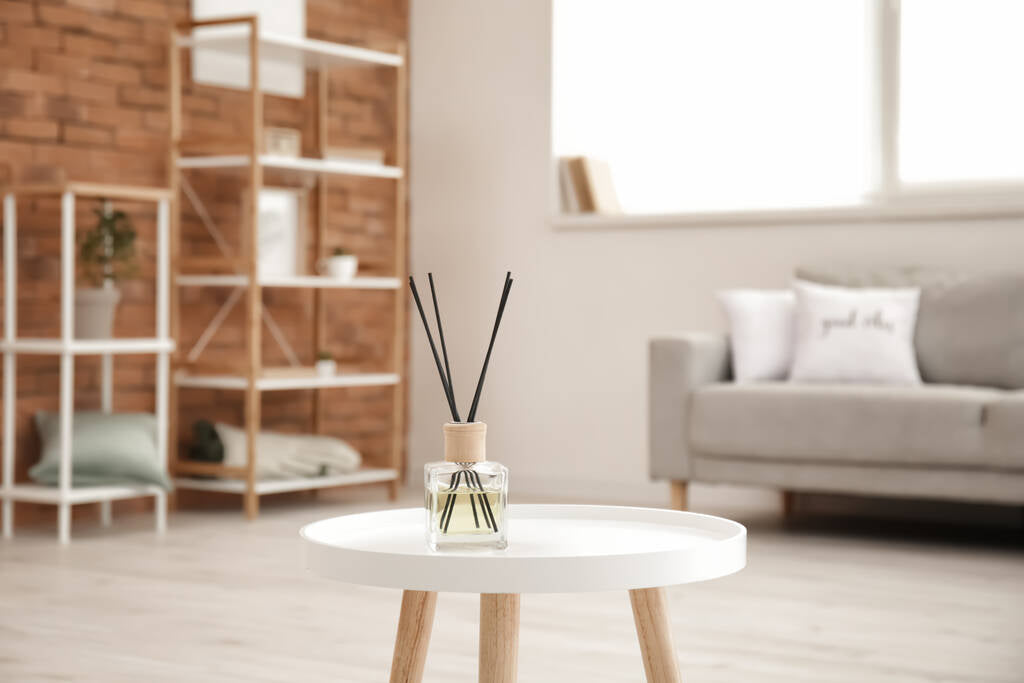You place a new reed diffuser on your coffee table, hoping for a steady stream of lavender to calm your space. Days later, the scent fades. You flip the reeds once or twice expecting the fragrance to get stronger but it does not.
And by the end of the week, the oil is half-gone, and the fragrance feels weaker than ever. Could flipping them too much be backfiring?
How Reed Diffusers Work: The Balance of Absorption and Evaporation
Reed diffusers operate through capillary action. Fragrance oil travels up porous reeds and evaporates into the air. Once exposed, the oil molecules disperse, scenting your space. Flipping the reeds refreshes this cycle by reintroducing dry ends to the oil, reigniting the process.
However, over-flipping disrupts this balance. Excessive flipping floods reeds with oil faster than they can evaporate, leading to clogs and uneven scent distribution.
Why Singapore’s Climate Demands Special Attention
Singapore’s high humidity doesn’t just fog up your glasses, it also disrupts your reed diffusers. Damp air slows fragrance evaporation, forcing reeds to work harder to release scent. Meanwhile, air-conditioned spaces yank moisture away, parching reeds and halting diffusion prematurely.
At Lynk Fragrances, our humidity-resistant oils solve this tug-of-war. Specially formulated for Singapore’s climate, they evaporate evenly in muggy bathrooms and chilled living rooms alike. No more guessing games. Just a steady, reliable fragrance where you need it most.
The Goldilocks Zone: How Often to Flip Reed Diffusers

Most experts agree that you should flip reeds every 7–14 days. This window prevents oil overload while keeping the scent noticeable. For stronger aromas, lean toward weekly flips. Subtle scents thrive with biweekly adjustments.
Factors Influencing Your Flipping Schedule
|
Factor |
Recommendation |
|
Room Size |
Large spaces (e.g., open-concept living rooms) need weekly flips |
|
Reed Material |
Synthetic reeds (like our fiber sticks) require less flipping than rattan |
|
Oil Viscosity |
Thicker oils (e.g., vanilla bases) evaporate slower-flip every 10 days |
|
Airflow |
Drafty areas? Reduce flipping to avoid rapid oil depletion |
In Singaporean homes, where humidity averages 80%, starting with 10-day intervals works well. Adjust based on scent strength and oil levels.
3 Signs You’re Flipping Too Frequently
-
The Oil Vanishes Prematurely: A standard 200ml bottle should last 3–4 months. If it’s empty in 6 weeks, this is a sign that you’re flipping the reeds too much.
-
Reeds Feel Sticky or Look Dark: Over-saturation causes oil residue to accumulate, blocking pores.
-
The Scent Turns Sharp or Burnt: Excess oil alters fragrance chemistry, emitting harsh notes.
If these signs appear, pause flipping for 2 weeks. Replace clogged reeds and top up the oil.
Lynk’s Guide to Maximizing Diffuser Lifespan
1. Start Slow, Adjust Smart
Begin with 6–8 reeds instead of filling the bottle. Fewer reeds mean slower oil absorption. Add more sticks gradually if the scent feels faint.
2. Rotate, Don’t Rattle
Gently rotate reeds 180 degrees weekly. Avoid aggressive flipping, which splatters oil and damages reed tips. For our fiber reeds, a slow twist ensures even saturation without waste.
3. Location Is Key
Place diffusers in stable environments away from windows, AC vents, or heat sources. In Singapore, hallway consoles or bedroom shelves work best, shielding reeds from humidity swings.
Crafting Singapore’s Ideal Atmosphere With Lynk Fragrances
At Lynk, we engineer reed diffusers for local homes. Our collection combines climate-adaptive oils with reeds tested in 80% humidity. Whether in an HDB flat or a landed property, our products maintain fragrance integrity where others fail.
Why Singaporeans Choose Lynk
-
Slow-Release Oils: Formulated to resist humidity-induced breakdown.
-
Refillable Glass Bottles: Swap scents seasonally-from tropical Oriental Mandarin to calming Lavender Mist.
-
Singapore-Centric Design: Reeds are pre-cut to suit common shelf heights, avoiding awkward overhangs.
Troubleshooting Common Diffuser Issues
“The Scent Disappeared After a Week!”
Fix: Use denser oils. Our reed diffuser oils cling to reeds longer, even in humid air. Place the diffuser in smaller rooms (e.g., study corners) for concentrated fragrance.
“The Reeds Look Oily and Gross”
Fix: Wipe reeds monthly with a microfiber cloth. Replace them every 4–6 months, or try our Fiber Reeds ($9.90), treated to resist residue buildup.
“I Can’t Smell Anything Anymore”
Olfactory fatigue tricks your nose into ignoring familiar scents. Shift the diffuser to another room for 48 hours, then return it. Alternatively, switch to a contrasting fragrance-citrus after floral-to reset your senses.
The Verdict: Flip With Intention, Not Impulse
Reed diffusers thrive on routine, not randomness. Flipping them too often drowns the reeds, wastes oil, and dulls your home’s aroma. Stick to a 7–14 day rhythm, adjust for room conditions, and pair with reeds designed for tropical climates.
Ready to optimize your scent game? Explore our reed diffuser collection in Singapore. With precision-engineered reeds and oils, you’ll spend less time flipping and more time breathing in the goodness.
